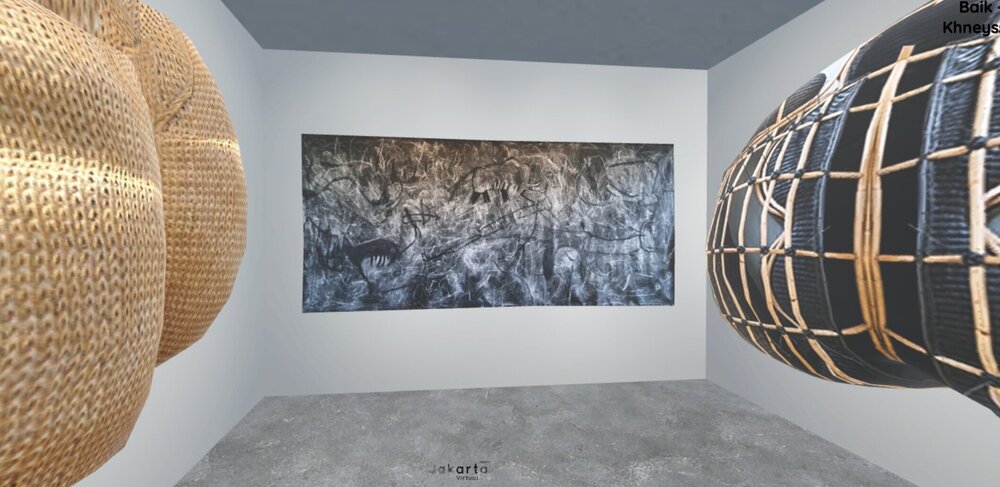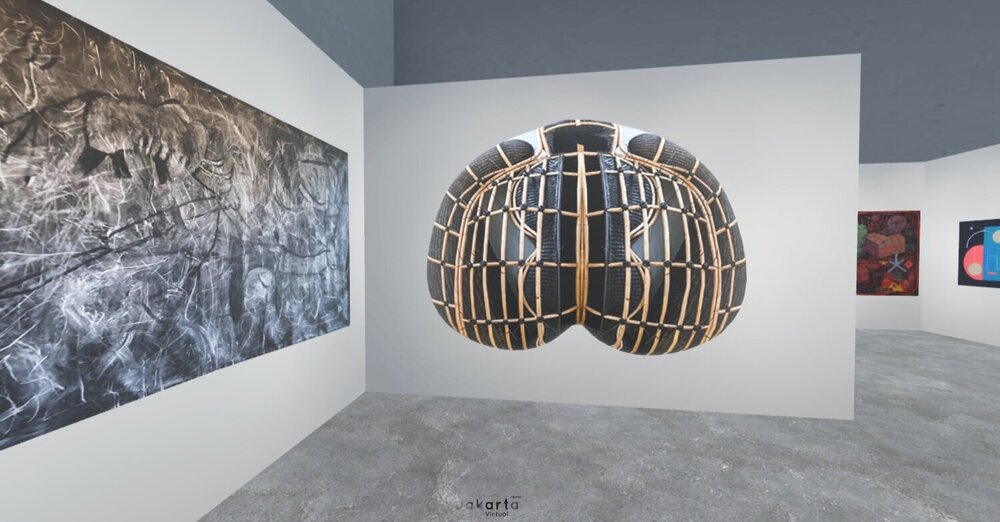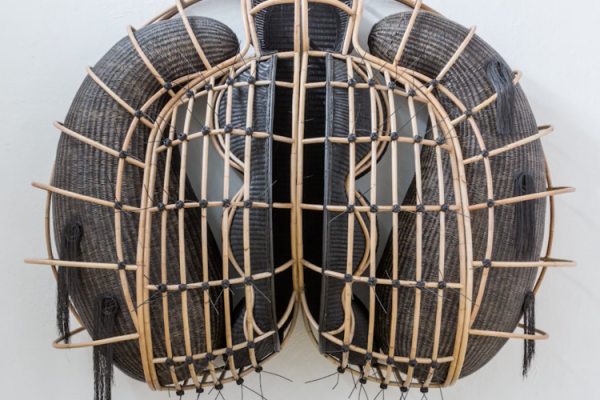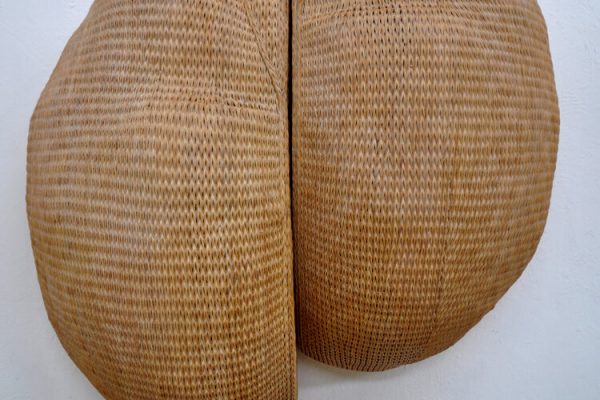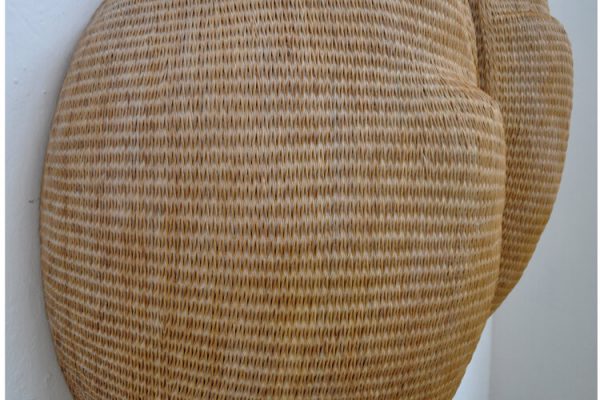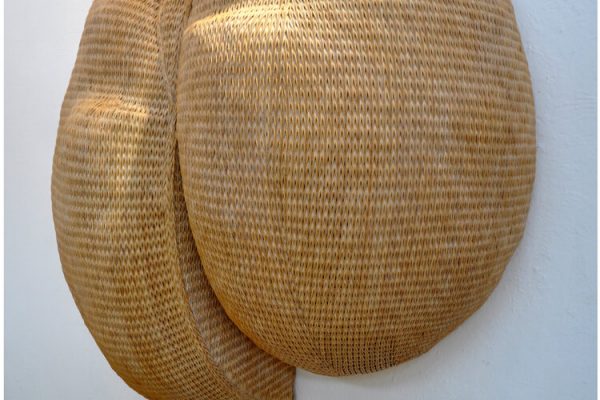Nindityo Adipurnomo and Aliansyah Caniago
19 OCTOBER - 15 NOVEMBER, 2020

NINDITYO ADIPURNOMO
Nindityo Adipurnomo (b. 1961, Semarang, Indonesia) lives and works in Yogyakarta, Indonesia and works to engage history in ways that examine how culture is created and developed under external influences. He is a co-founder of the Cemeti Art House (est.1988) and the Cemeti Art Foundation which was recently renamed the Indonesian Visual Art Archive (IVAA). This organization functions as a centre for information, documentation, and promotion of the visual arts within Indonesia. Since 2010, Adipurnomo has been developing art research and experimental projects within his local communities and collectives. His artworks have been featured in numerous collections including; the National Gallery of Singapore, Singapore; Queensland Art Museum, Brisbane; Fukuoka Asian Art Museum, Fukuoka; National Gallery of Indonesia, Jakarta; Tumurun Museum, Surakarta; MAIIAM Museum of Asian Contemporary Art in Chiang May, Thailand; Deutsche Bank, Jakarta; Katamama Hotel, Bali; and Vermond Hotel, Jakarta.
Mono Human Beinng_Rattan Coffin That Matter, 2019
Rattan, glue, shoelace
110.25 x 82.5 x 49.25 in
For more than ten years I have been investigating the formal quality, cultural significances, and signified meanings associated with the Javanese hair bun, otherwise known as “Konde.” As is true in many cultures, the display of one’s hair, or hair ornamentation, traditionally can be seen as a signifier of social status, religious or ideological affiliations, and/or personal expression. In the case of Indonesia, this particular hair piece is tied to histories of indigenous craft economies and is used by women during ceremonial rituals to project their marital or economic status.
As I spent time contemplating this tradition, I started to think more deeply about the hair style and interpreted it less as the celebratory fashion statement I’ve come to know in my country, and perhaps as something more sinister and complex. I started to play with the formal make up of Konde and presented those forms in larger than life sculptural renditions. Through this process the work started to reveal the ways in which these hair buns embolden fetishized and patriarchal notions of gender and how they largely equate a history of colonial opulence and seduction with our own projections of self-worth and cultural expression.
“Rattan Coffins That Matter #1” is composed of three elegantly constructed “coffins” who’s shape refrence that of a butterflies cocoon. The geometric forms join together in a contruction that becomes reminisant of the forementioned Konde. This thinking about religious and cultural affiliations led me to create a work that poses a haunting reminder of Bu Puji, a political radicalist, who along with two of her children commited suicide via a domestic bombing in an Indonesian church. Despite condeming the action itself, Nindityo thinks of these cacoons as vessles for transformation, hopefulness, and rebirth where even the darkest parts of us stand to find reconciliation and metamorphasis.
Hairbun from the earth, 2008
Rattan
75 x 63 x 29.75 in
In my work, “Portraits of Javanese Men” (2001), I further trace the ways these cultural relics affect and mask our sense of individuality and affirm traumatic and simplistic modes of representation. These sepia-colored photographs depict Javanese men with their faces obscured by the hairpieces they’ve been indoctrinated to lust after. This juxtaposition articulates the hair bun in a more objective way and becomes a metaphoric portrayal of cultural concealment, prejudice, and intolerance within Javanese society.
My investigations began to extend beyond just visual representations of Konde and instead I started to contemplate the craft and production of such objects and how this act of localized manufacturing has influenced various aspects of Javanese life. Largely upheld by women, Indonesia has preserved a lasting history of woven goods and the artistry that goes into creating such objects. Those in less urbanized housing would pick and shred mendong grass, stain the fibers, and weave the strands into their homes. This idea of preserving domestic experiences and narratives through indigenous traditions is something I looked to when considering my Empty Signifier tapestries.

ALIANSYAH CANIAGO
Aliansyah Caniago (b. 1987 in Indonesia) lives and works in Bandung, Indonesia. He studied Painting at the Bandung Institute of Technology Faculty Art and Design. Through site-specific interventions, installations and durational performances, he is interested in working directly with communities and developing artworks that could blend-in with the society, entering conflicted areas creatively and trying to repair the damaged environment. He participated in several group exhibitions and performance art events, both local and international. Alongside his artistic practice, he is also one of the founder of an artist collective space in Bandung, Ruang Gerilya. This space provides a platform for experimental works, and has a focus on artists interested in process and research. Apart from exhibitions, Ruang Gerilya hosts also discussions, artist talks, and workshops.
Created at MoT+++’s performance plus residency in Ho Chi Minh city, December 2019
“Hunters & Gatherers, although not tied to a performance, intends to reveal a contemplative relationship I have towards Javanese culture and the historical tropes that still exist within the landscape. After materializing several layers of underpainting, I realized that the formalist qualities within the work were akin to that of hyrogliphics or cave paintings. I started to question the reductiveness of these gestures and their primitive allusions. I liked how this imagery originates from a human desire to preserve indigenous narratives and the environment that housed them. A part of me thought we all feel primitive in this modern age, don’t we? Specifically in how we articulate our relationship with nature. Seeing so many cities in South East Asia quickly rise economically, at the cost of their natural environments, has made me reflect on my heritage and how it faces a growing sense of obsoletion in the face of western-led expansion.” – Aliansyah Caniago

Tropical Exotica; Different Gesture of the Dead Elephant, I always want to See The Elephant, 2018
Acrilyc, Charcoal on Canvas
47.24 x 62.99 in

Tropical Exotica; Different Gesture of the Dead Elephant, I always want to See The Elephant, 2018
Acrilyc, Charcoal on Canvas
47.24 x 62.99 in
Situ Ciburuy is a lake. Located around 22 km outside Bandung. It was once rich with fishes and shrimps to support the local economy. When the profit from fishing started to decline, locals sought new jobs with better prospect than fishing. Since 2012, almost 50% of Ciburuy’s population has started to work in factories. Nowadays the condition of the lake itself is getting worse because of mercury content in the water. This polution primarily comes from villagers who dispose of their garbage in the lake and all the heavy industry that has since developed around the lake. These citizens abandoned their livelyhood as fisherman and prefer to being labourers in the factories. Some of them became ojek drivers, kayaking athletes, street food sellers, farmers, stone miners, etc. Situ Ciburuy is the last remaining Lake in Bandung and it is a testimate to Bandung’s history. Bandung Lake was once massive but has since largely dried out and became a fertile green land which now is being used to construct an urban metropolis. However, this lake’s remaining water is still used as an essential utility for villagers and paddy field farmers around the area. My work aims to address this human abandonment of the natural world as my cultural heritage faces errosion from global economic expansion.
PRESS
COLLABORATORS



ADDITIONAL CONTENT

THE ARMORY SHOW
Mella Jaarsma and Jompet K. | March 4 - March 8, 2020

FELIX ART FAIR
Ross Rudel, Carol Kaufman, Lies Kraal, Syagini Ratna Wulan, Michael Brewster | February 13 - February 16, 2020

ART JAKARTA FAIR
Mella Jaarsma, Aliansyah Caniago, and Elliott Hundley | August 29 - September 1, 2019

ALIANSYAH CANIAGO AT MOT+
Aliansyah Caniago | Mar — Apr, 2018 | press release | Artist Talk: Aliansyah Caniago & Phu Luc (March 17, 2018)



